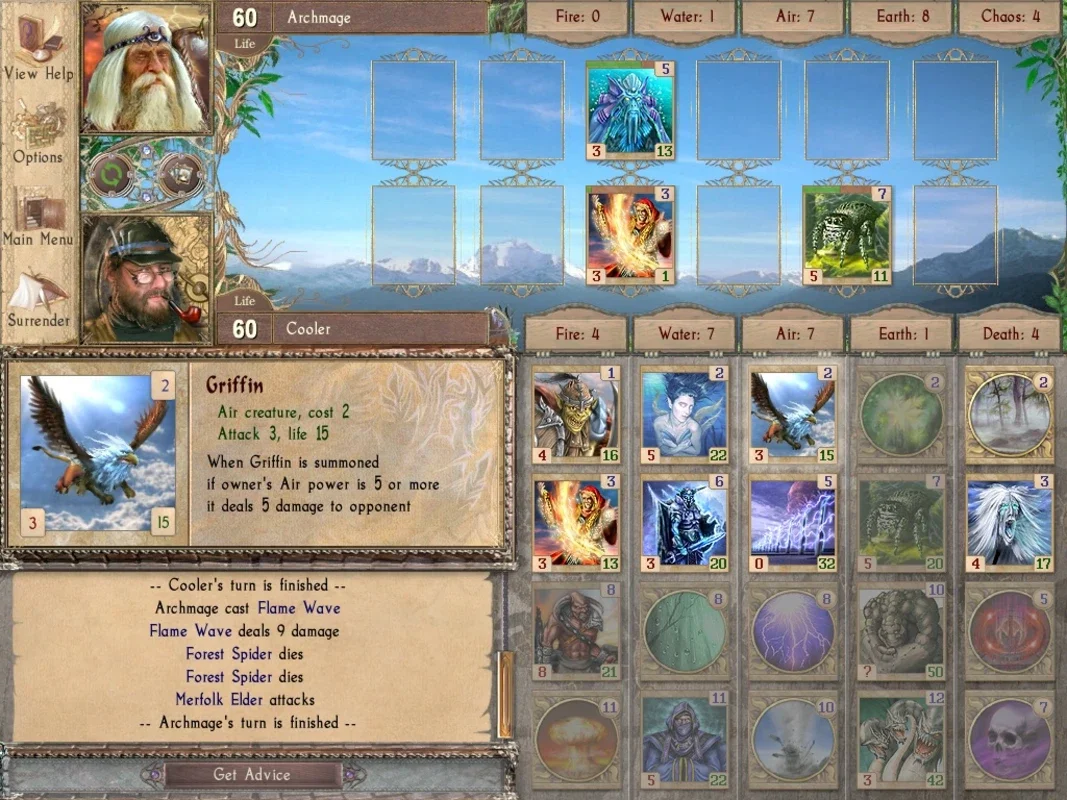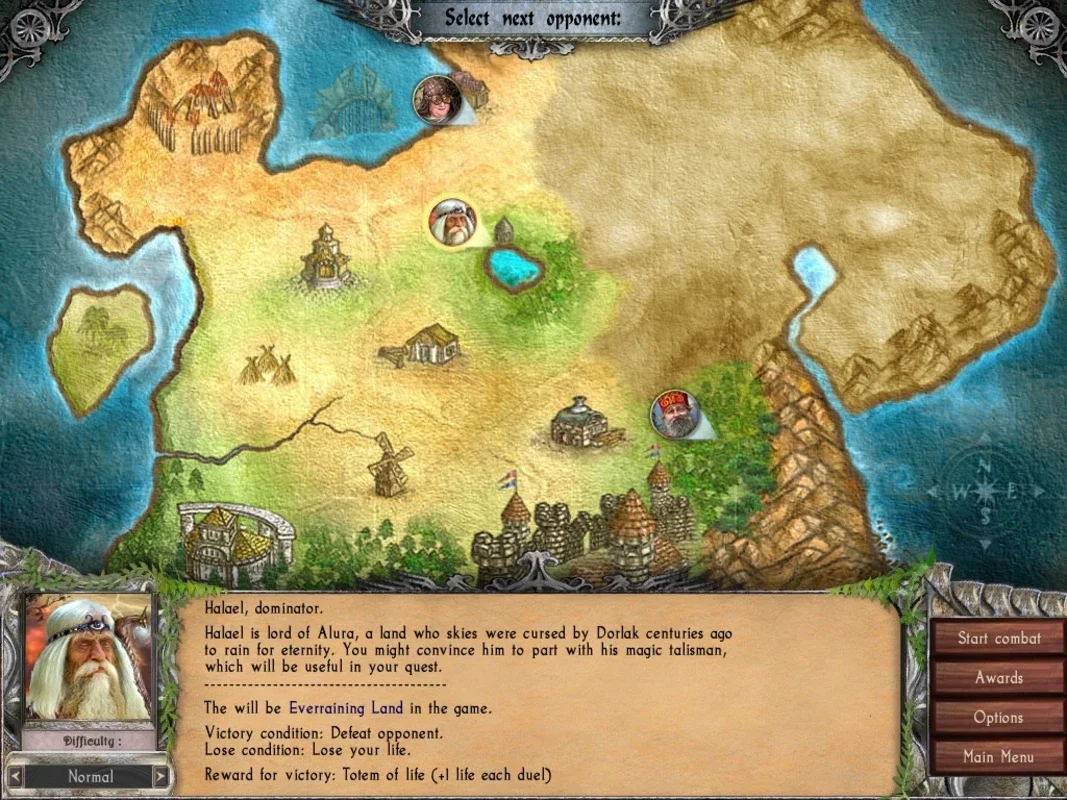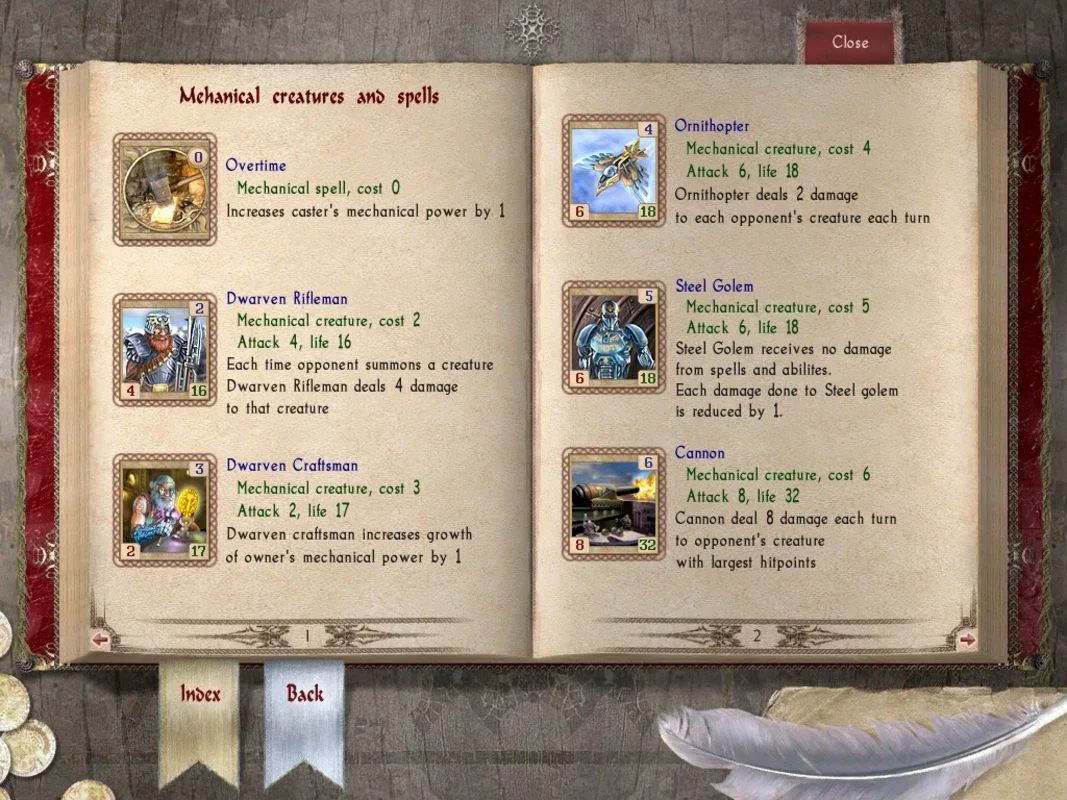Spectromancer App Introduction
Spectromancer is an enthralling online card game that transports players to a vibrant fantasy realm. In this realm, six distinct classes of mages engage in strategic duels, summoning creatures and unleashing powerful spells. This in-depth exploration will delve into the game's mechanics, strategy, and what makes it a captivating experience for card game enthusiasts.
The Six Mages: Mastering Elemental Powers
At the heart of Spectromancer lies the diversity of its mage classes. Each class wields unique abilities and commands five elements: fire, water, air, earth, and a class-specific element. This elemental system adds a layer of strategic depth, forcing players to consider elemental advantages and disadvantages in their deck construction and gameplay.
- Clerics: Masters of healing and support, Clerics utilize light as their unique element. Their abilities focus on bolstering their own defenses and weakening opponents.
- Mechanicians: These mages harness the power of steam and gears, with technology as their unique element. They excel at summoning powerful mechanical creatures and deploying disruptive tactics.
- Necromancers: Drawing power from the shadows, Necromancers command the element of death. Their decks are filled with undead creatures and spells designed to drain the life force of their opponents.
- Chaos Masters: Embracing unpredictable chaos, Chaos Masters wield the element of entropy. Their strategies are often unpredictable, relying on powerful, but potentially risky, spells and creatures.
- Dominators: Masters of control, Dominators command the element of mind. They excel at manipulating the battlefield, controlling their opponent's creatures, and disrupting their strategies.
- Illusionists: Weaving intricate illusions, Illusionists command the element of illusion. They specialize in deception, creating copies of creatures, and confusing their opponents with misleading tactics.
Gameplay: A Battle of Wits and Strategy
Spectromancer's gameplay is deceptively simple yet incredibly strategic. Players begin with 60 life points, and the objective is to reduce your opponent's life points to zero before they do the same to you. This involves careful deck construction, strategic card placement, and anticipating your opponent's moves.
The game's turn-based structure allows for meticulous planning. Players must carefully manage their resources, balancing offensive and defensive strategies. The element system adds another layer of complexity, as certain elements are stronger or weaker against others. Mastering these elemental interactions is key to victory.
Deck Building: Crafting Your Magical Arsenal
Deck building in Spectromancer is a crucial aspect of the game. Players must carefully select cards that synergize well with their chosen mage class and playstyle. This involves considering the strengths and weaknesses of each element, the cost of cards, and the overall balance of your deck.
Creating a well-rounded deck requires careful consideration. You'll need a mix of creatures, spells, and support cards to adapt to different situations. Experimentation and strategic thinking are essential to finding the optimal deck composition for your preferred playstyle.
Spectromancer Compared to Other Card Games
Spectromancer shares similarities with other popular card games like Magic: The Gathering and Hearthstone, but it also possesses unique features that set it apart. While it shares the core concept of strategic deck building and turn-based combat, Spectromancer's elemental system and diverse mage classes offer a fresh perspective on the genre.
Unlike some card games that focus heavily on randomness, Spectromancer emphasizes strategic decision-making. While luck plays a role, skillful play and strategic planning are far more important factors in determining the outcome of a match. This makes Spectromancer a rewarding experience for players who enjoy a high level of strategic depth.
Mastering the Art of Spectromancer: Tips and Tricks
Becoming a proficient Spectromancer player requires practice and a deep understanding of the game's mechanics. Here are some key tips to help you on your journey to mastery:
- Understand the Elemental System: Mastering the elemental interactions is crucial. Learn which elements are strong against others and build your deck accordingly.
- Strategic Deck Building: Don't just collect cards; build a cohesive deck with a clear strategy in mind. Consider synergy between cards and the overall balance of your deck.
- Resource Management: Careful resource management is key to success. Don't overextend yourself early in the game, and always consider the long-term implications of your actions.
- Anticipate Your Opponent's Moves: Pay close attention to your opponent's deck and playstyle. Try to anticipate their moves and adapt your strategy accordingly.
- Practice Makes Perfect: The more you play, the better you'll become. Experiment with different decks and strategies to find what works best for you.
Conclusion: A Game of Skill and Strategy
Spectromancer is more than just a card game; it's a test of skill, strategy, and adaptability. Its unique blend of elemental interactions, diverse mage classes, and strategic depth makes it a captivating experience for players of all skill levels. Whether you're a seasoned card game veteran or a newcomer to the genre, Spectromancer offers a rewarding and engaging challenge that will keep you coming back for more.
This detailed exploration has only scratched the surface of Spectromancer's intricate gameplay. The game's depth and replayability ensure countless hours of strategic battles and magical adventures await those who dare to enter this enchanting world of mages and mythical creatures.


